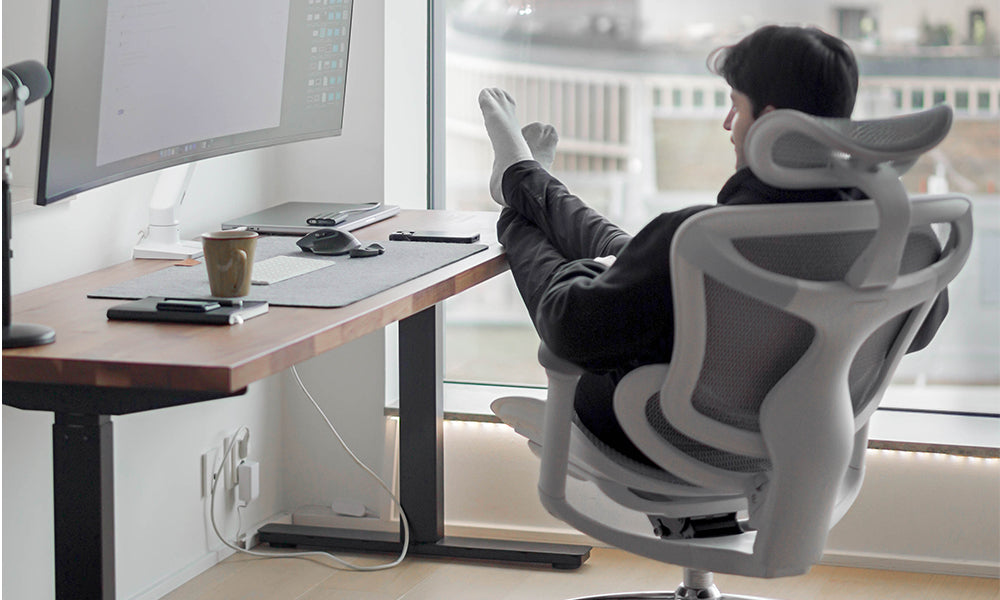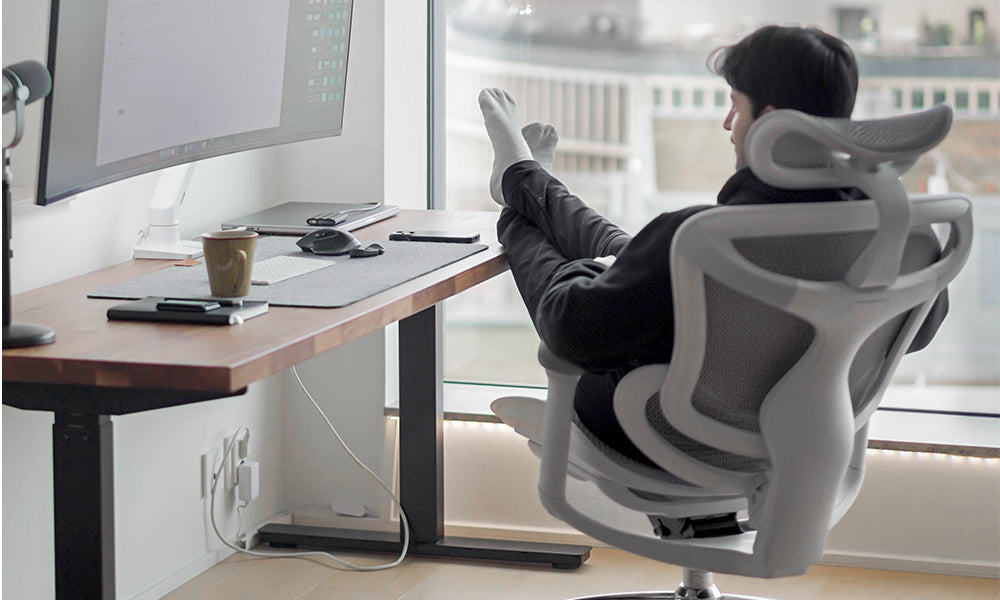In this day and age many of us spend countless hours hunched over desks, typing away at keyboards, staring at screens. While this work routine might seem like the new norm, the haunting effects of poor posture can come creeping up on you when you least expect it. Back pain, neck strain, and headaches are just a few of the "spine-chilling" consequences that can follow a lack of ergonomic awareness. But fear not—by embracing proper ergonomics, you can avoid these discomforts and maintain a healthier, pain-free work environment.
The Frightening Impact of Poor Posture
Poor posture isn’t just a cosmetic concern—it can lead to a variety of serious health issues, many of which affect your spine, muscles, and joints. Here are a few of the most common spine-chilling consequences of ignoring ergonomics:
-
Back Pain: The spine is meant to support your body in its natural, upright position. When you slouch or sit improperly, the spine's alignment gets disrupted, placing undue stress on the vertebrae and discs. Over time, this can lead to chronic back pain, muscle tension, and even more severe conditions like herniated discs.
-
Neck and Shoulder Strain: Constantly leaning forward to view a screen or tilting your head to check your phone can strain the neck and shoulders. This can result in “text neck,” where your neck muscles become overworked and stiff, potentially leading to nerve compression or pain radiating through the arms.
-
Headaches: Tension headaches often stem from tight muscles in the neck and shoulders caused by poor posture. These tension points can make it feel like there's a constant pressure in your head, haunting your day-to-day activities.
-
Nerve Damage: Bad posture can even affect your nerves. Conditions like sciatica, where a misaligned spine places pressure on the sciatic nerve, can cause shooting pain down your legs. Pinched nerves in the neck can lead to tingling, numbness, or weakness in the arms or hands.
These physical ailments don’t just stop at causing discomfort—they also have a chilling effect on productivity, focus, and quality of life. Thankfully, you can escape the clutches of these spine-chilling effects by making ergonomics a priority in your workspace.
Avoiding the Haunting Consequences: Embrace Ergonomics
To prevent your spine from becoming the ghost of poor posture past, adopting ergonomic principles is essential. Proper ergonomics isn’t just about sitting up straight—it's about creating a workspace that encourages healthy posture and minimizes strain on your body. Here’s how you can do just that:
1. Choose the Right Ergonomic Chair
One of the most important elements of an ergonomic setup is your office chair. Your chair should support the natural curve of your spine and offer lumbar support to prevent slouching. Look for features like adjustable seat height, seat depth, and backrest angle to customize the chair to your body. Ergonomic chairs like the Sihoo Doro C300 or the Sihoo Doro S300 offer dynamic lumbar support and multi-dimensional adjustments, ensuring that your spine remains in alignment throughout the day.
2. Set Your Screen at Eye Level
Whether you’re using a desktop or a laptop, make sure your screen is positioned at eye level. This reduces the need to bend your neck forward, which can strain your neck muscles. If you’re working on a laptop, consider using a laptop stand or external monitor to keep your screen at an ergonomic height. Your goal is to avoid the "craning effect," which leads to the dreaded “tech neck.”
3. Maintain Proper Desk Height
Your desk height plays a crucial role in maintaining good posture. Ideally, your elbows should be at a 90-degree angle when typing, and your wrists should remain straight. If your desk is too high or too low, you may end up hunching your shoulders or straining your arms, leading to discomfort over time. Adjustable standing desks, like the Sihoo D03, allow you to switch between sitting and standing, which can help you maintain a healthy posture throughout the day.
4. Pay Attention to Your Feet
One of the lesser-known but vital aspects of good posture is keeping your feet flat on the floor. When your feet dangle or rest unevenly, it can throw off your entire body's alignment, increasing strain on your lower back. If your chair is too high, use a footrest to keep your feet comfortably grounded. A simple adjustment like this can save you from the spine-chilling effects of lower back pain.
5. Take Frequent Breaks
Even with the perfect ergonomic setup, sitting for long periods is still harmful to your health. Regularly stand up, stretch, and walk around to encourage blood flow and give your muscles a break. Frequent breaks can help prevent the stiffness and discomfort that come from sitting in one position for too long. Use tools like a standing desk to break the cycle of continuous sitting and promote active movement.
Ergonomics: Your Shield Against Haunting Health Issues
While the effects of poor posture can be frightening, the good news is that they're largely preventable. By investing in proper ergonomic equipment and developing healthier habits, you can avoid the spine-chilling consequences of poor posture and enjoy a more comfortable, productive workday.
Ergonomics isn’t just about protecting your spine today—it’s about safeguarding your long-term health. Whether you’re typing away at your desk or enjoying a break, following ergonomic principles ensures that you won’t be haunted by pain and discomfort in the future. So, set up your space wisely, adjust your posture, and embrace the comfort of ergonomics that won't come back to haunt you later!







Dejar un comentario
Este sitio está protegido por hCaptcha y se aplican la Política de privacidad de hCaptcha y los Términos del servicio.